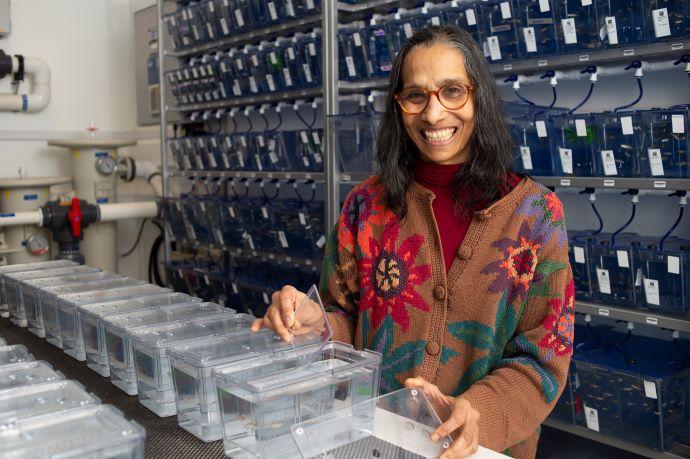University of Cambridge Professor of immunology and infectious diseases, Prof Lalita Ramakrishnan, becomes only the fourth woman in history to receive on her own the coveted Robert Koch Prize 2024, endowed with 120,000 Euros towards research.
She said: “I am thrilled to receive this recognition as we further explore the mechanisms of TB pathogenesis and drug resistance, while continuing to move our laboratory findings to clinical studies and trials. We use the tiny transparent zebrafish larva to model TB pathogenesis. This prize recognizes the value of taking such unorthodox approaches to understand human disease and identify new treatments.”
The Berlin-based Robert Koch Foundation was set up in 1907 to bring attention to the rapid progression of medical sciences, in particular the fields of infectious diseases.
The Foundation makes multiple awards each year, and the 'Robert Koch Prize' is one of the most important scientific awards in Germany. It was created as a means to draw attention to specific fields of scientific research - this year's being Tuberculosis (TB).
Prof Ramakrishnan is one of the top research scientists in the field of TB, having developed many important tools enabling ground-breaking research into the disease.
Chairman of the Robert Koch Foundation, Prof Dr Wolfgang Plischke said:
“It is an honour for us to celebrate the work of Prof Dr Lalita Ramakrishnan, a top scientist who is doing pioneering work in tuberculosis research.
“The disease is still one of the main causes of death, even though a live attenuated vaccine has been available for a century and effective antibiotics have been available for 60 years.”
Prof Ramakrishnan is a member of the US National Academy of Sciences and a Fellow of the Royal Society. She also won the 2024 The European Society of Mycobacteriology (ESM) Gardner Middlebrook Award. It is a lifetime achievement award started by the ESM in 1996 in memory of Gardner Middlebrook, a renowned authority on mass immunisation against tuberculosis, one of the world's biggest killers.
Image credit: MRC Laboratory of Molecular Biology



